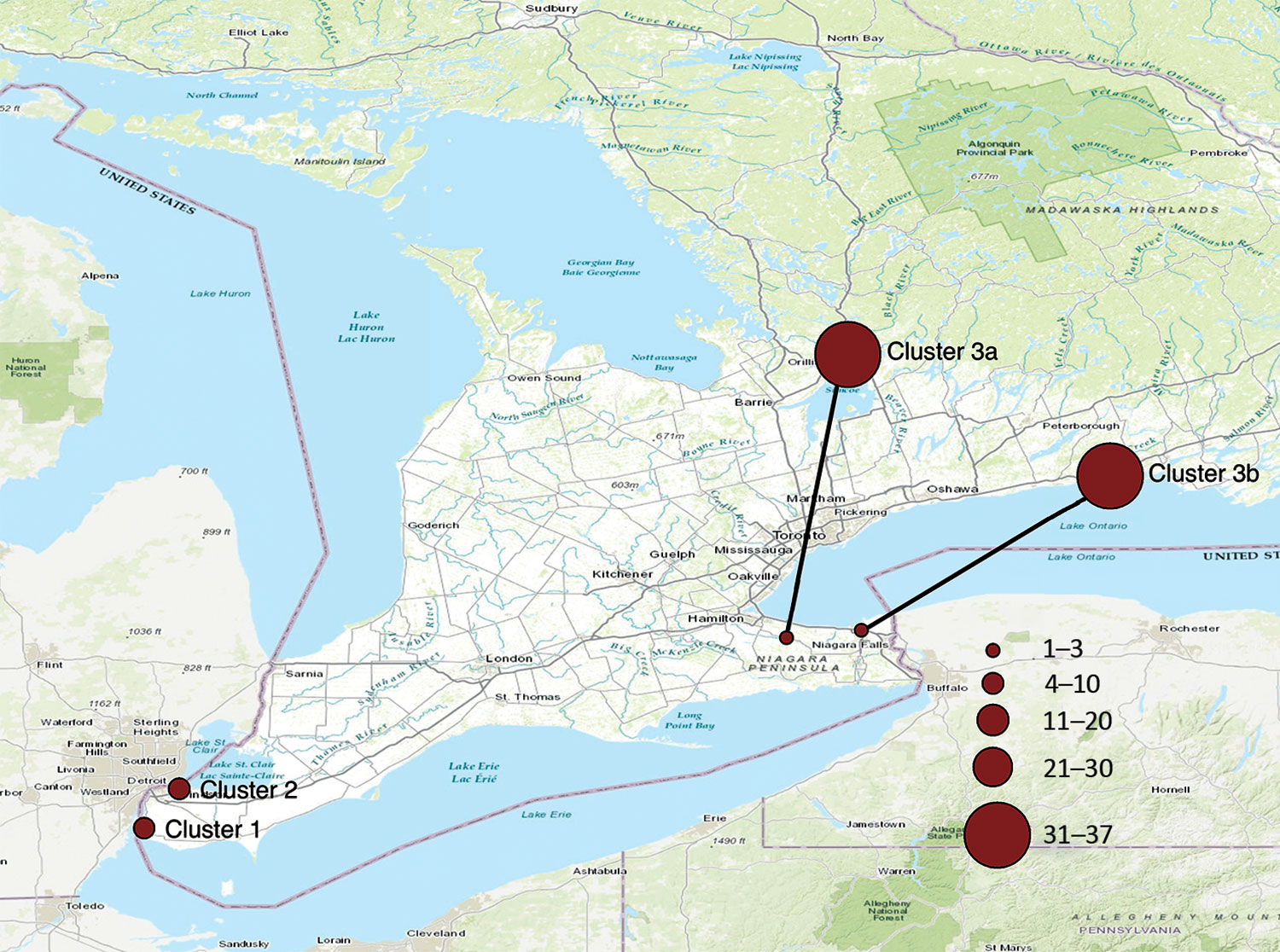Emergence and Containment of Canine Influenza Virus A(H3N2), Ontario, Canada, 2017–2018
J. Scott Weese

, Maureen E.C. Anderson, Yohannes Berhane, Kathleen F. Doyle, Christian Leutenegger, Roxanne Chan, Michelle Chiunti, Katerina Marchildon, Nicole Dumouchelle, Theresa DeGelder, Kiera Murison, Catherine Filejksi, and Davor Ojkic
Author affiliations: University of Guelph, Guelph, Ontario, Canada (J.S. Weese, K. Murison, D. Ojkic); Ontario Ministry of Agriculture, Food and Rural Affairs, Guelph (M.E.C. Anderson); National Centre for Foreign Animal Disease, Canadian Food Inspection Agency, Winnipeg, Manitoba, Canada (Y. Berhane); Chidiac Animal Hospital Gravenhurst, Gravenhurst, Ontario, Canada (K.F. Doyle); IDEXX Laboratories, West Sacramento, California, USA (C. Leutenegger); IDEXX Laboratories, Markham, Ontario, Canada (R. Chan); Northumberland Veterinary Services, Colborne, Ontario, Canada (M. Chiunti); Lake Country Animal Hospital, Severn, Ontario, Canada (K. Marchildon); Fort Malden Animal Hospital, Amherstburg, Ontario, Canada (N. Dumouchelle); Forest Glade Animal Hospital, Windsor, Ontario, Canada (T. DeGelder); Ontario Ministry of Health and Longterm Care, Toronto, Ontario, Canada (C. Filejski)
Main Article
Figure 1

Figure 1. Approximate locations and number of dogs with diagnoses of canine influenza virus infection, Ontario, Canada, 2017–2018.
Main Article
Page created: September 17, 2019
Page updated: September 17, 2019
Page reviewed: September 17, 2019
The conclusions, findings, and opinions expressed by authors contributing to this journal do not necessarily reflect the official position of the U.S. Department of Health and Human Services, the Public Health Service, the Centers for Disease Control and Prevention, or the authors' affiliated institutions. Use of trade names is for identification only and does not imply endorsement by any of the groups named above.
